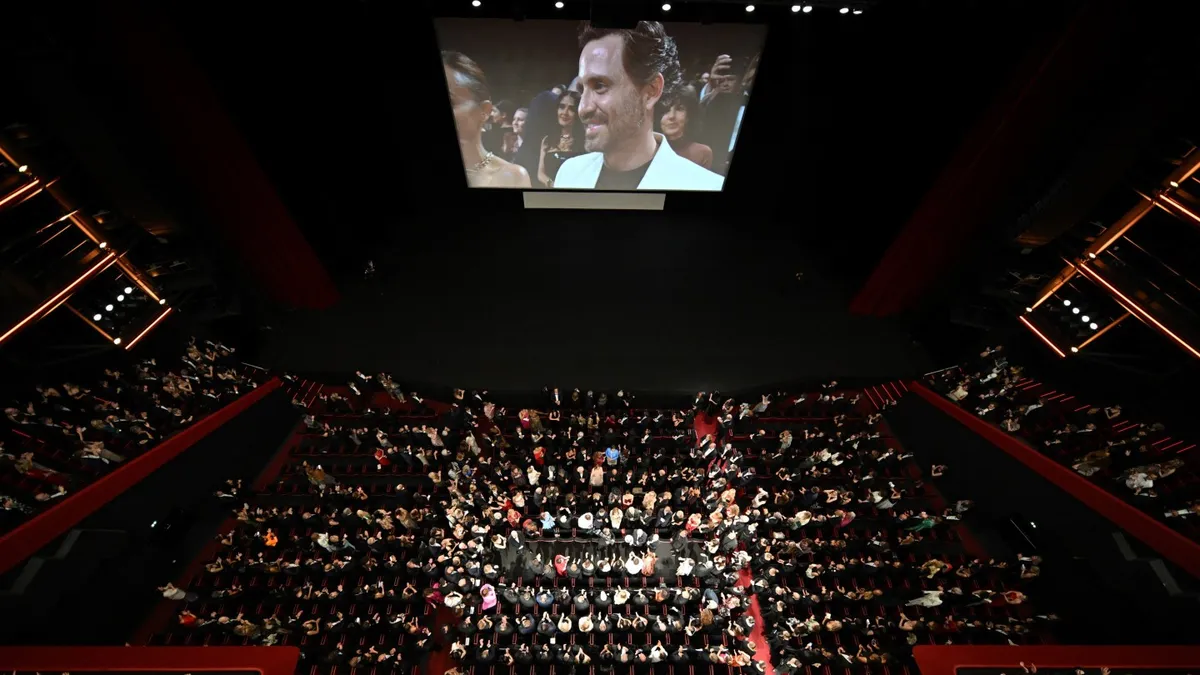
In recent years, the Cannes Film Festival has become synonymous with its increasingly standardized custom of drawn-out standing ovations. This practice has sparked both sneers and sympathy, drawing attention from critics and admirers alike. As the 78th annual film festival kicks off, the trend shows no sign of abatement, prompting a closer examination of the underlying signals behind the noise. The persistent and excessive applause is not merely an expression of joy; it also serves as a desperate indicator of the decline in what is ostensibly being celebrated. These ovations, rather than representing genuine enthusiasm, may be a reflection of deeper issues within the cinematic landscape.
The phenomenon of prolonged applause at Cannes can be likened to rallies in authoritarian regimes, where the act of applauding becomes a normalized behavior driven by key institutional factors. One such factor is the festival’s in-house production crew, which projects the faces of directors and actors onto the Palais’ big screen at the conclusion of each premiere. This visual cue encourages audience members to engage in what can only be described as a performance of mania.
Furthermore, the media coverage surrounding the festival, including outlets like The Hollywood Reporter, has legitimized this trend by timing and reporting on the length of these ovations. For instance, Guillermo del Toro’s 2006 film "Pan’s Labyrinth" received a remarkable 22-minute eruption of applause, aligning with the film's lasting acclaim. However, more frequently, these ovations appear to be a bizarre blend of etiquette and irrational exuberance.
A rare exception to this trend is director Bong Joon Ho, who managed to curtail his ovation to a mere eight minutes during the 2019 premiere of "Parasite." His humorous remark, “Thank you, let’s all go home,” resonated with the audience, reflecting a common sentiment among premiere attendees who, like him, may have felt hungry after a long evening.
Cannes' artistic director, Thierry Frémaux, has openly endorsed the practice of encouraging audience ovations. He has stated that part of his role is to manage the screening experience, including when to dim the lights and when to cut the credits. He believes that every screening is a celebration, and audience participation heightens that celebration. However, this perspective raises questions about the authenticity of the applause and the potential for self-censorship among festival-goers.
Other prominent film festivals, such as Venice, have also adopted this trend of extended applause, especially for films featuring big-name stars. Titles like "Gravity," "A Star is Born," and "Birdman" have transformed Venice into a critical stop on the American awards season circuit. Should Berlin ever abandon its tradition of critical reserve, the landscape of film festival culture may shift dramatically.
Historically, Cannes was known for its passionate disavowals, where booing served as a transparent expression of audience sentiments towards controversial films like Vincent Gallo’s "The Brown Bunny" or Gus Van Sant’s "The Sea of Trees". Over the past decade, however, this tradition of public mockery has all but disappeared. The audience's self-censorship has become the norm at the Lumière Theatre, raising concerns about the authenticity of the festival experience.
The rampant applause at Cannes may act as a mask for the diminishing relevance of the films being celebrated. A vibrant and dynamic art form, confident in its cultural standing, typically does not require overcompensation through excessive praise. As once-dominant modes of expression become marginalized, they often resort to cringeworthy coping mechanisms—think of the obligatory standing ovations at theatrical performances or the inflated reviews of new ballet productions.
While well-meaning audiences at Cannes may believe they are fostering a supportive creative community, the overwhelming cheers often drown out the reality that might be better addressed with more measured restraint. Perhaps a moment of reflective silence would better serve the less-than-transcendent premieres, allowing for a more authentic dialogue about the state of contemporary cinema.